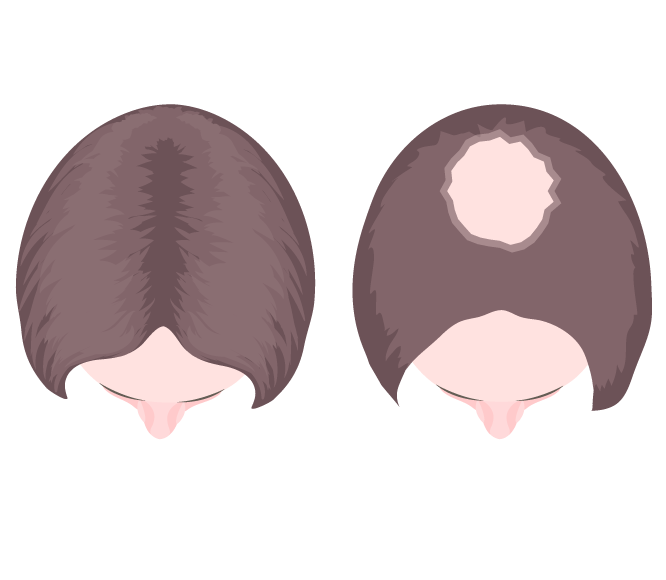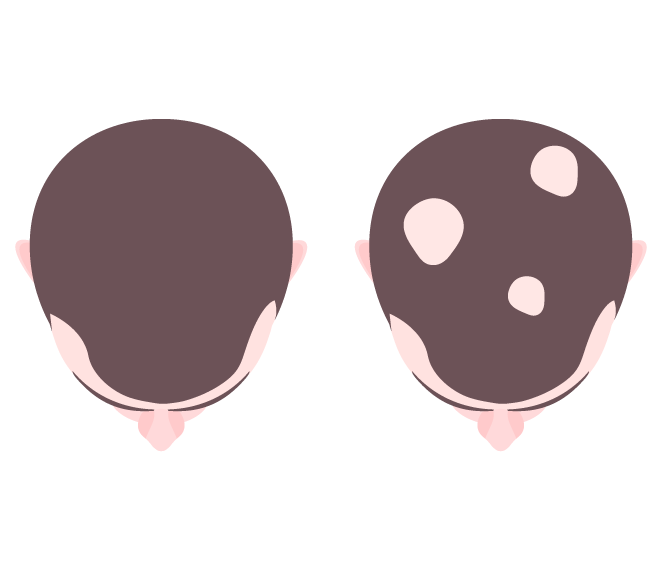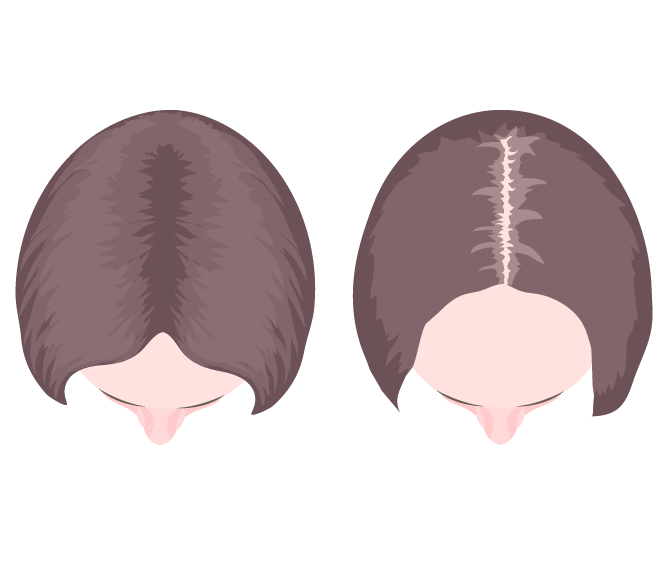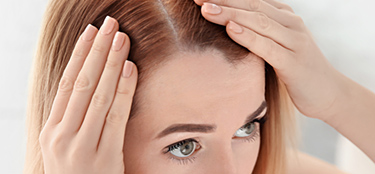Hair Loss – ALOPECIA
The normal growth cycle of the hair sees it grow, rest, and then fall out. An average person with healthy hair loses between 70 and 100 hairs from their head each day. The loss of more hair than this can cause a thinning of the hair or baldness. This can occur suddenly or more gradually over time. Such symptoms could be a sign of a disturbance in the hair growth cycle and should be discussed with a specialist.
This problem is referred to as hair loss or alopecia. There are various types and numerous reasons for this problem – from age to genetics, to environmental factors. The three most common types are androgenetic alopecia, alopecia areata, and diffuse hair loss.
Androgenetic Alopecia
Androgenetic alopecia is also known as pattern baldness or alopecia androgenetica and is the most frequently occurring cause of hair loss. This form of hair loss is linked to hormones called androgens, and to dihydrotestosterone or DHT, in particular. Androgenetic alopecia usually increases with age.
A number of genetic and environmental factors can cause androgenetic alopecia. However, the majority of cases are hereditary. More specifically, those suffering from this type of baldness have inherited hair follicles with a genetic sensitivity to the androgen DHT. This hypersensitivity causes the hair follicles to become smaller, shortening their lifespan. As a result, hair falls out faster, and these follicles stop producing hair.
Androgenetic alopecia usually starts at the anterior hairline, commonly referred to as a receding hairline. The hair loss then progresses further backwards over the head, often resulting in complete baldness. In some cases, certain sections of hair remain on parts of the scalp.
Women affected by androgenetic alopecia often experience hair loss throughout their lives, as the thinning of the hair can begin at an early age. Here, the hair loss less frequently starts with a receding hairline but often with a widening of the central parting.

Diffuse Alopecia

Diffuse alopecia describes a loss of the hair across the entire head. This type of hair loss can affect both sexes, but it is more common in women. It can also occur at any age. The symptoms of diffuse hair loss not only include the loss of hair across the entire scalp, but also the thinning of the hair itself, as the hair loses its density. This problem can be particularly distressing, as it suddenly becomes noticeable that an increased amount of hair is falling out on the pillow, while brushing or washing. However, this type of hair loss is usually temporary; the hair is able to grow back as long as the hair follicle remains active.
There are a variety of reasons for diffuse hair loss. These include hormonal fluctuations as triggered by pregnancy, the intake of oral contraceptives, or thyroid dysfunction. Illness, infection, and medical treatments can also be responsible for the symptoms, as can vitamin and mineral deficiencies (especially iron, zinc, folic acid or vitamin B12 deficiency), dietary and metabolic disorders. Finally, psychological factors and stress often play a role here.
Alopecia areata
Alopecia areata is an unpredictable type of hair loss, whereby hair falls out in small coin-sized patches. This problem often develops suddenly and can affect other parts of the body aside from the scalp.
This type of hair loss is considered an autoimmune condition as it is often accompanied by inflammation. This means that white blood cells, which are in fact responsible for supporting immune function, attack the hair growth cells in the hair follicles. Subsequently, an inflammatory reaction is triggered, whereby the hair growth cells shrink and slow hair production.
While researchers are yet to find a cause for this reaction, a genetic component seems to be involved. Alopecia areata is more likely to occur when a close family member has also experienced symptoms.
For many, alopecia areata is a temporary problem and the hair grows back. For others, this problem is the starting point for other types of alopecia.

Postpartum hair loss – after childbirth

Postpartum alopecia is a type of hair loss that occurs in women during the initial months after childbirth. It is triggered by hormonal changes that occur postpartum, specifically, by the drop in the body’s oestrogen levels after the birth. During pregnancy, oestrogen reduces the proportion of hair in the telogen (resting and regeneration) phase by around 50%, so women no longer lose the average 100 hairs each day. This is the reason why many women enjoy thicker, shinier hair while pregnant. After giving birth, the woman begins to lose the hair retained during pregnancy.
Postpartum hair loss can begin suddenly, two to three months after childbirth. In most cases, hair loss returns to pre-pregnancy level six to nine months postpartum.
How can hair loss be prevented?
Unfortunately, there is no cure for hair loss. However, your hair care routine can play a significant role. Regular washing and gentle combing can help, while chemical treatments, colouring, and dying can aggravate hair problems. Scalp massage can also improve blood circulation in the scalp and stimulate hair growth. You can reduce stress and stimulate hair growth by massaging the whole scalp with the fingertips in slow, circular motions. A balanced diet rich in vitamins and minerals, regular exercise and sufficient sleep and exercise can help too.


